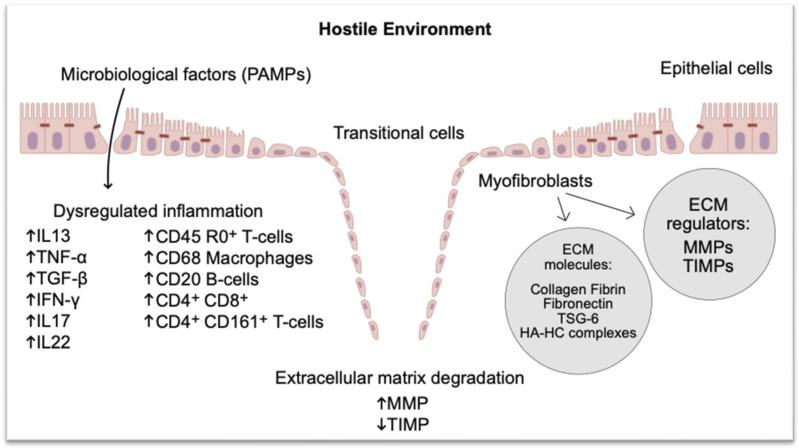Figure 3.
Pathogenesis of Crohn’s perianal fistula. Pathogenesis of Crohn’s perianal fistula. Pathogen-associated molecular patterns (PAMPs) such as Muramyl dipeptide (MDP) lead to activation of various immune cells and cytokine release causing a dysreglated inflammatory cascade resulting in epithelial-to-mesenchymal transition. Subsequent activation of myofibroblasts leads to increased expression of matrix metalloproteinases (MMP) and decreased expression of tissue inhibitors of MMPs (TIMP) resulting in extracellular matrix degradation and failure of wound repair. TSG-6: TNF-stimulated gene-6; HA-HC complexes: covalent complexes between hyaluronan and the heavy chains (HCs) of inter-alpha-inhibitor (lal).

